#A Turret Gunner Simulation
Explore tagged Tumblr posts
Video
youtube
Backlash: A Turret Gunner Simulation for DOS
#youtube#Backlash: A Turret Gunner Simulation#Backlash#A Turret Gunner Simulation#DOS#MS-DOS#MSDOS#Action#Shooter#First-Person Shooter#FPS#First-Person#FP#Sanctuary Software Studio
2 notes
·
View notes
Text

This Is What It Took To Defend A B-17 Bomber
Manning the .50 caliber machine guns aboard a U.S. Army Air Force heavy bomber was a tough and at times terrifying job.
Thomas NewdickPUBLISHED Jan 31, 2024 5:00 PM EST
World war two aircraft: B-17G Fortresses of the 381st Bomb Group in flight, Summer 1944.
(Photo by PhotoQuest/Getty Images
With the first episodes of Masters Of The Air having received considerable praise for their air combat sequences especially, the story of the U.S. Army Air Forces (USAAF) in World War II is very much back in the public consciousness. In its initial review of the series, The War Zone noted its attention to detail, especially in the terrifying scenes of B-17s flying into flak or being attacked by Luftwaffe fighters.
The combination of simulated concussive blasts, shrapnel, and machine gun rounds very effectively summon up the chaos of the daytime bomber offensive. Meanwhile, the frantic efforts of B-17 gunners to defend their aircraft from enemy fighters that seemingly press home attacks from every quarter are also a signature motif within this drama.
With that in mind, it’s worth looking at what went into these defensive measures and how they changed as the bomber offensive developed, taking the war ever further into Nazi Germany and occupied Europe.
youtube
In the interwar period, proponents of the bomber were convinced that, according to the words of future U.K. Prime Minister Stanley Baldwin, speaking in 1932, “The bomber will always get through.”
With no truly effective defense against bombers, the defenses that armed the bombers themselves were understandably neglected.

In an expression of the “bomber will always get through” mantra, the initial service test version of the B-17, the Boeing Y1B-17, was armed with just five 0.3-inch machine guns in flexible mounts. Public Domain, U.S. Air Force
Broadly speaking, it was this thinking that saw the bombers of the U.S. Army Air Forces go to war in Europe without fighter escort. The British, for their part, had learned the hard way about the vulnerability of daylight bomber operations without escort and had switched primarily to nighttime raids.
As it was, the USAAF heavy bombers that began flying raids over Europe from their bases in England in the summer of 1942 relied on a combination of formation tactics — primarily the ‘combat box’ and variations of it — and the crew-operated 50-caliber machine guns that armed the B-17s, numerically the most important bomber of the Eighth Air Force flying from England.

A depiction of a combat box formation for a squadron of 12 B-17s. Annotations show: 1. Lead element 2. High element 3. Low element 4. Low low element. Anynobody/Wikimedia Commons
The growing realization that a heavy bomber operating in daylight, regardless of formation, could swiftly fall victim to an enemy fighter is reflected in the steady increase in the defensive firepower on the B-17. Defense of the B-17C model was initially entrusted to just four of the ubiquitous 50-caliber Browning M2 machine guns and a single 0.3-inch machine gun in the nose. The ultimate B-17G bristled with 13 50-caliber Brownings, firing at a rate of 750 rounds per minute out to an effective range of around 3,500 feet.
In the B-17G, these guns were located in a twin chin turret, a twin top turret above the fuselage, a twin ball turret below the belly, a twin tail turret, plus single trainable guns in ‘cheek’ positions on either side of the nose, in the radio compartment in the upper fuselage, and in ‘waist’ positions on either side of the rear fuselage. Typically, the ball turret and tail turret were manned by dedicated gunners, while the other guns were operated by other members of the crew as needed.
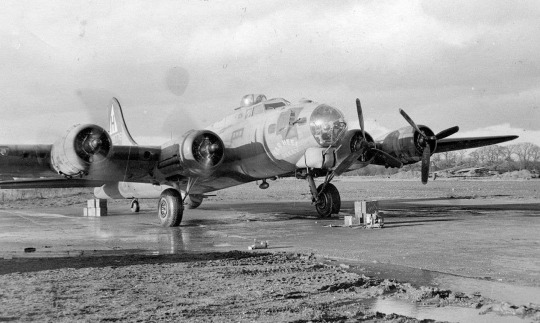
A B-17G of the 306th Bomb Group, fitted with a chin turret, from a photograph dated November 1943. The original caption read: “The new chin turret — so-called because it is fitted under the ‘chin’ of the aircraft — is the latest addition to the armor of the Flying Fortress.” United States Army Air Forces

A gunner sights his machine gun through the Plexiglass hood that was introduced over the radio compartment in the upper fuselage, amidships on the B-17, in a photo dated September 1944. Photo by PhotoQuest/Getty Images
The top turret and ball turret were electro-hydraulically powered and could bring the guns to bear on a target rapidly, traversing at some 50 degrees per second and electrically fed with ammunition. The tail turret was manually operated while the remaining trainable guns were on pivoted mounts, meaning the gunners had a limited field of fire and had to wrestle with the slipstream as they tried to get the enemy in their sights. Those sights were initially of the primitive ring-and-bead type, later superseded by reflector sights, making deflection shooting more reliable.

Bomber crew in the nose of a B-17 in the run-up to World War II. The limited traverse available on the gun mounted in the nose transparency is evident. Photo by Ivan Dmitri/Michael Ochs Archives/Getty Images
Despite the impressive concentration of firepower, an individual bomber remained highly exposed, especially during its run-in to the target, when it needed to fly straight and level.
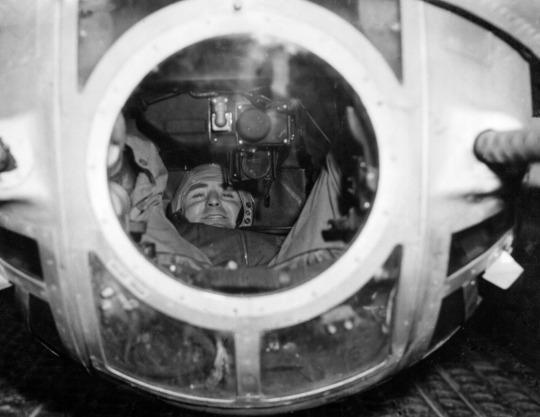
A gunner sitting at his action station in a B-17 ball turret, September 1944. Photo by Mondadori via Getty Images
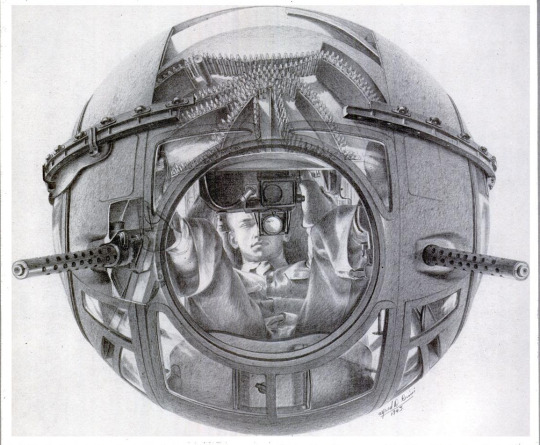
A wartime illustration of a Sperry Ball Turret, of the kind that armed versions of both the B-17 and B-24. The foetal position of the gunner and the ammunition feed mechanism are seen to good effect. Alfred D. Crimi, illustration for United States Army
The combat box was therefore soon developed to provide mutual protection, with interlocking arcs of fire provided by bombers flying in formation and staggered at different levels. This presented Luftwaffe fighters with a bigger problem and helped ensure that bombs were delivered close to the chosen target. This latter point was especially important bearing in mind the high altitudes from which these raids were typically flown. However, these tactics also required the bombers to stay in rigid formation if it was to be successful — counterintuitive when coming under attack from fighters or anti-aircraft fire from the ground.
Ultimately, as formations grew in size, the combat box was refined to become the ‘wing box,’ comprising three staggered 18-plane boxes for a total of 54 bombers. This was especially challenging for crews, with closely packed bombers running into each other’s turbulence and with a risk of bombs from a higher stack hitting aircraft flying below. When it worked, however, the wing box provided roughly 700 defensive machine guns that could be brought to bear on fighter opposition.
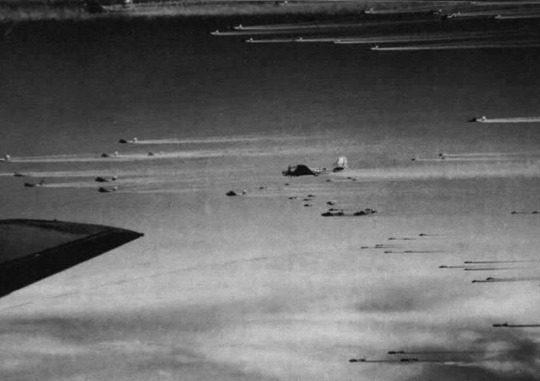
The view into a multi-ship B-17 bomber stream during World War II. These examples are purportedly from the 493rd Bomb Group, 3rd Bomb Division. U.S. Air Force photo
As well as falling bombs, there remained the risk of fratricide of another kind, too. While bombers’ gun turrets were designed to fire on arcs that ensured the aircraft’s tail, for example, would not be shot off, the same was not the case for other bombers flying nearby.
Other changes to the combat box tactics followed, including looser formations of 27 or 36 aircraft once flak superseded fighters as the primary threat to the bombers. The need for more spacing was driven by the fact that the detonation of a single anti-aircraft shell from a flak gun could potentially knock out more than one bomber. Once radar-guided Pathfinder groups became available, this also allowed bombers to operate with greater separation between them and still hit their target reasonably accurately, even in poor weather.

A B-17 crew of the 306th Bomb Group stand underneath the flak-damaged wing of their B-17, nicknamed Holy Hellcat, in 1943. United States Army Air Forces
Whatever the tactics, the process of getting bombers into compact formation was also far from easy. Considerable training was required beforehand and, for the missions themselves, assembling the bombers in their boxes needed a lot of time and energy on the part of the crews and consumed precious fuel. Some accounts suggested it took roughly an hour to get into formation at the start of a mission. Flamboyantly painted ‘assembly ships’ were among the initiatives developed to make the process easier.
At the same time, the Luftwaffe was adapting its tactics to deal with larger and better-armed USAAF bomber formations. In particular, German fighter pilots made high-speed ‘slashing’ attacks.

A model of a B-17E/F with latticework showing the directions of fire from its defensive machine guns, for the aid of a Luftwaffe Fw 190 fighter pilot, circa 1943–44. German Federal Archives
Despite the lack of fighter opposition at the start of the USAAF bombing campaign, it was far from easy for the Luftwaffe to bring down a big B-17 or B-24 bomber.
One Luftwaffe report indicated that around 20 hits from 20mm cannon shells (far more destructive than the bombers’ own machine guns) were needed to destroy a USAAF heavy bomber in an attack from the rear. At the same time, the average Luftwaffe pilot would hit a bomber with only around two percent of the rounds they fired; that translated to a requirement of 1,000 20mm rounds to ensure a bomber’s destruction. A Luftwaffe Fw 190 fighter carried only 500 rounds.
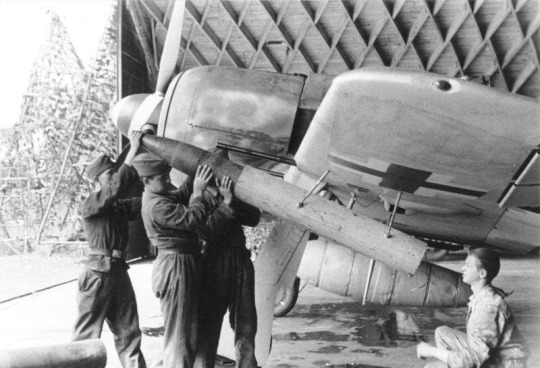
A Luftwaffe Fw 190 is loaded with 21-cm-Werfergranaten (WfG. 21) rockets, to be used to attack heavy bombers, in 1943. German Federal Archives
It’s notable, too, that as well as adding more defensive guns, the bombers also received more and improved armor, making the Luftwaffe’s task harder still.
Attacking a bomber head-on provided better odds for the Luftwaffe pilot, since the bomber’s forward-firing defensive armament was more limited, and its armor less effective. Destroying a bomber from head-on could be achieved with four or five 20mm hits, according to Luftwaffe studies. However, this was also addressed in the program to up-arm the USAAF ‘heavies,’ including the B-17’s chin turret.
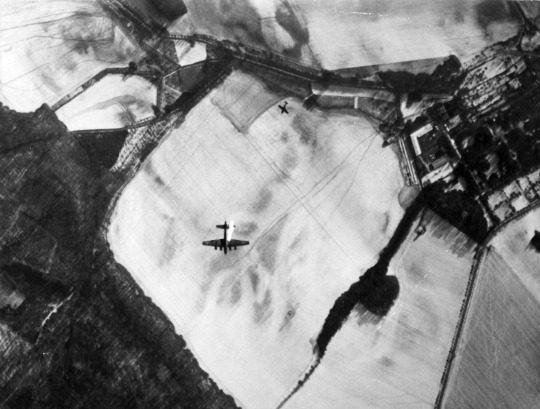
A Focke-Wulf Fw 190 shoots down a USAAF B-17G during an attack on the AGO Flugzeugwerke Aircraft factory at Oschersleben, Germany, January 11, 1944. U.S. Air Force photo
Once again, as the USAAF bombers added guns, the Luftwaffe in turn increased its firepower, adding more ammunition, cannons in ever-heavier calibers, and later even air-to-air rockets. These initiatives may have been driven primarily by the requirement for heavy-hitting weapons that would be more likely to destroy a heavy bomber in a single pass, but they also increasingly out-ranged the bombers’ defensive guns. Fortunately for the Eight Air Force, the 21-cm rocket, despite its large warhead, was less than reliable.
In action, the 21-cm-Werfergranaten (WfG. 21) rocket proved relatively ineffective. “It downed few bombers, but it often damaged planes sufficiently to force them out of formation so that other fighters could finish them off,” the aviation historian Alfred Price recalled.
In October 1943, an Eighth Air Force raid against the ball-bearing production center at Schweinfurt, in southern Germany, demonstrated to USAAF leadership that a different approach would be needed if the bombers were to survive.

USAAF B-17Fs in formation over Schweinfurt, Germany, during an earlier raid on the ball-bearing production center on August 17, 1943. U.S. Air Force photo
By this stage, fighter escorts were available to the USAAF bombers, but, as the Schweinfurt raid of October 14, 1943, demonstrated these protective assets were too few in number and their range too short to ensure adequate protection.
The second Schweinfurt raid saw 291 B-17s sent against the target, of which 60 were lost outright, 17 damaged beyond repair, and another 121 damaged to one degree or another. A staggering 22 percent of the bomber crews involved — around 650 out of 2,900 men — were killed.
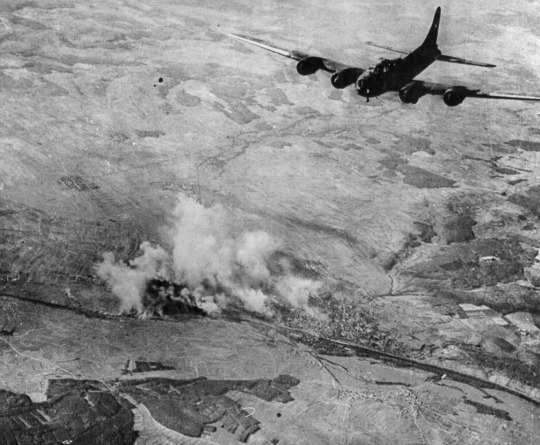
A B-17 of the Eighth Air Force heads back from the raid against Schweinfurt, Germany, on October 14, 1943, an operation that came to be known as known as ‘Black Thursday.’ U.S. Air Force photo
The USAAF responded by suspending unescorted daylight bomber raids deep into Germany until February 1944. When they recommenced, P-51B long-range escort fighters were available to provide the bombers with the close defensive protection they so badly needed. Flying ahead of the combat boxes, the P-51s would ultimately wrest control of the skies from the Luftwaffe’s fighter force. They would be aided in this by the tide of the war turning against Germany more generally, depriving it of the resources it needed to try and blunt the Allied bomber offensive.
Between February and June 1944, this combination of factors finally saw the B-17 emerge as a survivable asset. After the successful ‘Big Week’ raids of early 1944, Berlin was now in the USAAF’s sights. The first Eighth Air Force raid on the capital of the Third Reich came in March.
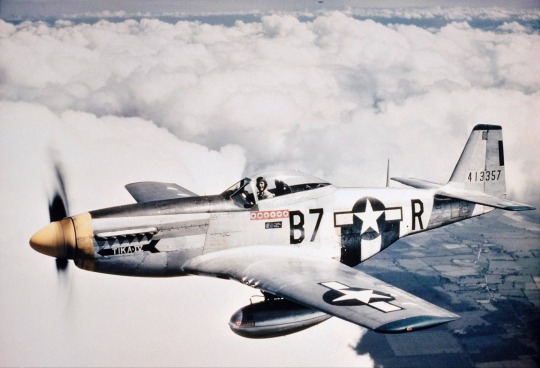
Tika IV, a P-51D flown by Lt. Vernon Richards, serving with the 374th Fighter Squadron, 361st Fighter Group. United States Army Air Force/361st FG Association, via Al Richards
The Luftwaffe’s response, from now on, was fairly tokenistic. The jet-powered Me 262, armed with heavy cannons and also rockets, was a formidable bomber-destroyer but fielded in numbers too small to be meaningful and its operations were hampered by shortages of pilots and fuel. The rocket-powered Me 163, on the other hand, offered blistering performance that allowed it to pass through bomber streams unscathed, but was arguably more lethal for its pilots than the Eighth Air Force.
Until the Eighth Air Force finally got the upper hand over Europe, survival had very much been down to the bravery and skill of the bomber crews themselves. While they were aided by the ability of the B-17, especially, to absorb a significant degree of battle damage, their machine gun armament was more than just a morale-booster.

“Hitler would like this man to go home and forget about the war. A good American non-com at the side machine gun of a huge B-17 bomber is a man who knows his business and works hard at it” — the original caption of a staged wartime propaganda photo showing a B-17 waist gunner. Collection Library of Congress, Transfer from U.S. Office of War Information, 1944
The bombers’ defensive armament and the tactics designed to best exploit it forced the Luftwaffe to change its approach. Gunners also achieved success, with the Eighth Air Force claiming 6,259 enemy aircraft destroyed by bomber gunners, more than for its fighter pilots. There is no doubt, however, that attributing fighter ‘kills’ was tricky in the heat of combat. Often, multiple gunners would open fire on the same target, observation of confirmed wreckage was far from guaranteed, and there was no gun-camera footage. Limited recognition of gunner aces reflected these realities, but at the same time, their enlisted status (for the most part), meant they were often also omitted from official lists of USAAF aces.

B-17s from the 398th Bombardment Group fly a bombing run to Neumunster, Germany, on April 13, 1945, less than one month before the German surrender on May 8. U.S. Air Force photo
Regardless, their job was a vital one and their mission among the most hazardous imaginable.
“When he was not shooting or being shot at, the gunner’s prime concern was survival,” Bruce D. Callander wrote in the April 1, 1991, issue of Air & Space Magazine.
“Missions lasted up to eight hours, with much of the flying taking place above 25,000 feet. Temperatures dropped as low as minus 60 degrees Fahrenheit in bombers that had no insulation and little heating outside the flight deck. Fleece-lined flight jackets were scant protection. The earliest electrically heated suits often shorted out and burned their occupants. Waist gunners worked through open windows, suffered frozen fingers, and slipped on the spent shells that piled up at their feet. Turret gunners had slightly more protection from the elements, but their cocoons allowed little room to move an aching arm or to stamp a cold foot.”
With hindsight, it’s clear that the availability of high-quality long-range escort fighters in sufficient numbers was the decisive factor in reducing Eighth Air Force bomber losses to a more acceptable level. But until those fighters were fielded, the bomber crews themselves more often than not provided their aircraft with the first and last line of defense.
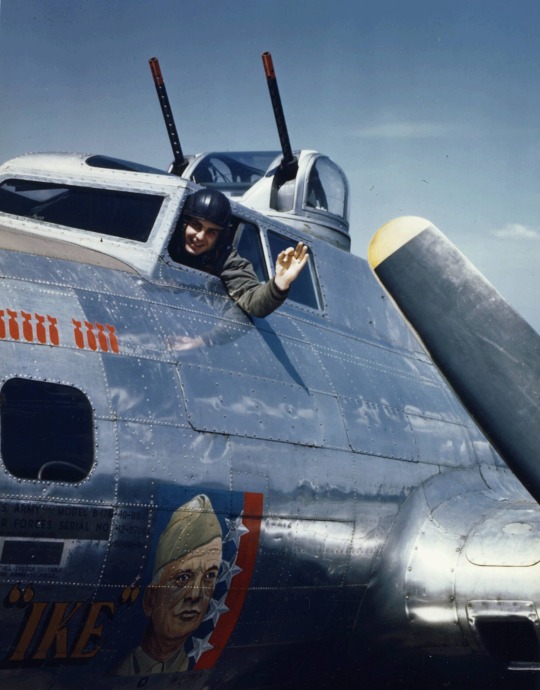
1st Lt. George H. Heilig waves and gives the okay sign from the cockpit of the General Ike, a B-17 from the 401st Bomb Squadron, 91st Bomb Group, Eighth Air Force, England, circa 1944. Photo by PhotoQuest/Getty Images
Interestingly, there was a school of thought in the United Kingdom, at least, that suggested that the Royal Air Force might have been better off removing defensive guns from its World War II bombers altogether.
The theoretical physicist and mathematician Freeman Dyson, in 1943, proposed removing at least some of the gun turrets from Lancaster bombers, to provide what he claimed would be a 50 m.p.h. increase in cruising speed. The unarmed Mosquito relied on its speed for protection from Luftwaffe fighters, but it was a far higher-performing aircraft in general and it seems highly unlikely that an unarmed Lancaster would have been much more survivable.
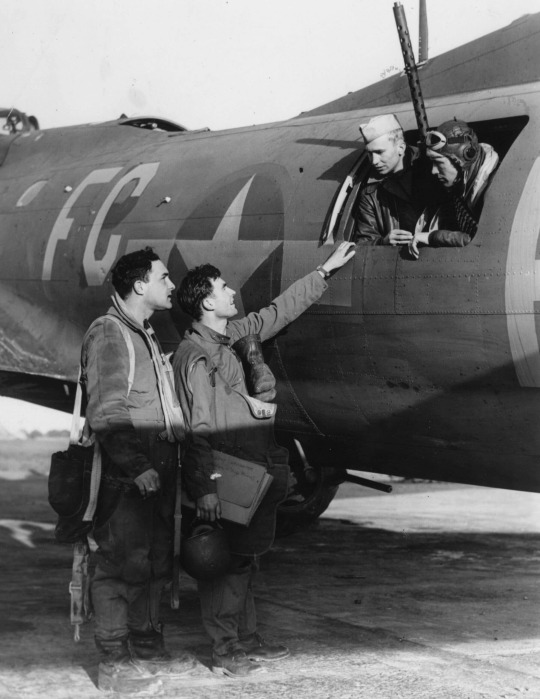
August 1943: United States Army Air Forces bomber crewmen with their B-17. Visible are the left-side waist machine gun, as well as the ball turret and the gun protruding from the radio compartment in the upper fuselage. Photo by Hulton Archive/Getty Images
This brings us again to the morale factor and the very important fact that USAAF and Royal Air Force heavy bomber crews were able to fight back with defensive armament, even if their guns were still at a disadvantage against the Luftwaffe in terms of destructive power.
While precise tallies of the Eighth Air Force gunners’ successes can never be determined, their legacy was continued in the postwar U.S. Air Force, which continued to arm its strategic bombers with guns, finally only in the tail, right up until the B-52H. The B-52H still serves today, albeit with its tailguns now deleted. Fittingly, the B-52 and the service’s other strategic bombers come under the command of the Eighth Air Force — the very same formation whose gunners fought so valiantly for the liberation of Europe back in World War II.
Contact the author: [email protected]
40 notes
·
View notes
Text
Backlash - A Turret Gunner Simulation (DOS, Sanctuary Software Studio, 1995)
You can play it in your browser here.
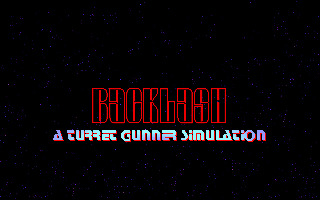
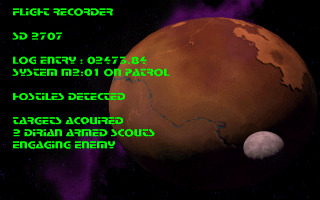



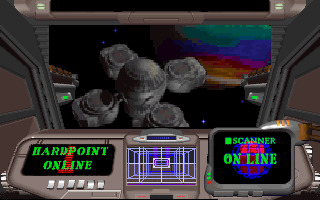


#internet archive#in-browser#dos#dos games#game#games#video game#video games#videogame#videogames#computer game#computer games#obscure games#retro games#retro gaming#retro graphics#game history#gaming history#1995#1990s#90s
9 notes
·
View notes
Text
1990s-early 2000s Game: Realistic WW2 Bomber Simulator
1990s-early 2000s Game: Realistic WW2 Bomber Simulator Trying to remember the name of this game we played when we were kids. It was a realistic type flight simulator .. flying WW2 era bombers (B-17s?) in the European Theater. You could switch positions in the plane from pilot to bombardier and gunners/turrets (I think). I remember when you switched to the bombardier position in the plane, you'd look through the bomb scope to aim at the designated ground targets, which were usually a Fuel Depot, Ammo Depot, etc. A lot of the game was dry .. you'd take off from the runway, fly for what felt like forever, then try to take out the target, and head back to the airbase. I remember it being a pretty technical game (not cartoony or easy, at least not for us when we were young).Anyone have any ideas? TIA!EDIT: I don't believe it was B-17 Flying Fortress: The Mighty 8th (it was an older game than that .. less crisp graphics). Submitted June 17, 2025 at 07:07PM by -t-t- https://ift.tt/2VN8KwH via /r/gaming
0 notes
Text
KNDS Germany to Supply New Stridsvagn 122 Tank Simulators to Swedish Army
The Swedish Armed Forces, in collaboration with the Swedish Defense Materiel Administration (FMV), has entered into a contract with the German company KNDS Germany (KMW+NEXTER Defense Systems), formerly known as KMW. The agreement is centered around the acquisition of tank simulators for the Stridsvagn 122, an improved variant of the Leopard 2A5. These advanced simulators are set to replace the existing turret crew training facilities (TBTA) within various units, as well as the crew training facility (BTA) at the Army Combat School. The newly acquired simulator is designed to facilitate comprehensive training for an entire tank crew, including the commander, gunner, driver, and loader, across all training levels – from basic individual training to collective unit exercises. Mirroring the capabilities of the operational tank, the simulator will also be equipped with the latest command support system.
The Swedish Armed Forces, in collaboration with the Swedish Defense Materiel Administration (FMV), has entered into a contract with the German company KNDS Germany (KMW+NEXTER Defense Systems), formerly known as KMW. The agreement is centered around the acquisition of tank simulators for the Stridsvagn 122, an improved variant of the Leopard 2A5. These advanced simulators are set to replace the…

View On WordPress
0 notes
Photo

USA 1981
#USA1981#INSTANT SOFTWARE#STRATEGY#ACTION#SIMULATION#ADVENTURE#TRS80#RAMROM PATROL#YOUR CRIBBAGE AND CHECKERS PARTNER#CHESSMATE 80#FLIGHT PATH#BALL TURRET GUNNER#JET FIGHTER PILOT#AIRMAIL PILOT#SPACE TREK II#AIR FLIGHT SIMULATION#SPACE TREK IV#LUNAR LANDER#COSMIC PATROL#NIGHT FLIGHT#WHO DUN IT?#SANTA PARAVIA AND FIUMACCIO#OIL TYCOON#BOWLING
60 notes
·
View notes
Text
Putting Play Before Work [ao3]
rating: E word count: 4284 summary: “Cephalon Cy requests a rendezvous in his datascape.” That was their ship Cephalon, a former Corpus make that had taken little convincing to go rogue once all the redundancies and captive bolts had been taken off. Asuka nodded curtly. “Thank you. Inform him that I’ll be over soon.”
“Cephalon Cy requests a rendezvous in his datascape.” That was their ship Cephalon, a former Corpus make that had taken little convincing to go rogue once all the redundancies and captive bolts had been taken off.
Asuka nodded curtly. “Thank you. Inform him that I’ll be over soon.”
Truthfully, they missed the Cephalons of their prime, of the time of the Orokin; they were lovingly made, painfully made, capable of much more than what they were programmed to do. The advantage of a carefully-crafted AI was that with the proper restrictions it would never strain against the yoke.
Asuka could see both sides. They still saw something admirable in the struggle, and they saw something admirable in the flawless fulfillment of a role.
Cephalon Cy was one of those ancient Orokin-Era Cephalons. Despite themself, they disengaged from the forge mechanism with almost anticipatory swiftness and set off at a stride to the relay drydock.
Cephalon Cy had been allowed a small room in which to manifest his datascape while he did business with the other Cephalons who inhabited the relay. It could be done over the Weave, of course, and his real Cephalon casing was ensconced securely within his Tenno’s Railjack, but the relay had a spare room and he hadn’t refused when it was offered— perhaps to do business with Tenno who weren’t of his crew, as well. It was much less tense than boarding the Tenno’s ship, and much less likely to set Asuka unduly on guard than inviting himself onto their ship, so Asuka approved of the move.
The door to his room opened and the seamless mesh of reality and his manifested datascape spread out before them. It was what appeared to be a Tenno drydock, different in make and style than the relay design.
Their body felt light for a moment, then heavy; then, returning to normal. That must be the datascape accepting their body; molding around them, integrating them into an artificial world. It would be very hard to leave now unless Cy let them.
They were here at his request— likely for a business matter. They quelled a warm, twisting sensation in their stomach and continued down a ramp to the entrance to the Railjack.
Sigma Series. Ancient, but refurbished. The drydock was a ghost town but the Railjack itself was powered up. The reverse-grav system caught them up and they adjusted to the flip in perspective with ease of practice, twisting and landing on their feet on the gunnery room airlock.
“You requested my presence.” The Cephalon was listening; he must be. With the precise control that a datascape offered, he likely knew that they were going to talk milliseconds before they started talking through the tensing of their throat. They moved through the Railjack to the pilot’s room, sparing a brief look at the spinal gun. It used to be powerful. Expensive, and high-risk, but during the later parts of the war any risk was worth the reward. Asuka had never seen much use to it-- but then, they’d been asleep for those later parts.
“I heard the rumors. I wanted to see for myself if they were true.”
His voice was deep and measured; before becoming a Cephalon, he must have held some position of power and authority. Otherwise, he wouldn’t have become a Railjack Cephalon— a Command Cephalon, at that.
“If that’s all,” Asuka allowed themself to snipe; sardonic, but not yet biting. They brushed their fingers against the ridge of the pilot’s enclave. Diversified bridges were past Cy’s time. The pilot of a Sigma-series craft served as a pilot and gunner both, and as a captain half the time, too. The Orokin trusted their most elite ranks to succeed with only the bare minimum of support and tools.
For the most part, they did. Asuka knew what inevitably happened; they’d long ago stopped humoring a sick feeling of having missed out on the majority of the war. Death would have been honorable then, yes, but ultimately unhelpful.
“I have missed the masterful hand of a Dax at the helm.” Cy’s voice reverberated throughout the Railjack. Asuka forcefully reminded themself that they were inside a datascape, even though the muted, ambient purr of the engines and guns made it almost impossible to know better. It would be too easy to slip into the pilot’s enclave and take the ship out. They rarely piloted anymore— spent a majority of the time in flight coordinating the actions of their crew or leading boarding parties. A Cephalon’s datascape was not the place to indulge old urges.
“Do you find the Tenno unsatisfactory?” They left the enclave to inspect the navigation console instead. It had the hazy, inoperable quality of a dream; they couldn’t make out nav orders or coordinates. They moved on.
“I find them to be much like Tenno, and little like Dax.”
Most Dax operated like well-oiled machines with little thought to personal glory. They lived for their Orokin master’s honor; as elite and favored as Asuka was— had been— they were valued most when they were little more than a tool. Cy must be accustomed to the unflinching obedience of a Dax.
Still, Asuka knew better than to underestimate the Tenno. The Tenno had survived the Old War— the Dax was now little more than an extinct order, perished alongside their Orokin masters.
“We are all tools,” Asuka finally responded. The door slid open with a muted hiss, allowing them back into the gunnery room. They stood at the edge of a gunner’s enclave, suddenly conscious of their reflection in the reinforced glass.
They looked the same as they had before being ordered into cryosleep. They wore their hair down now, though, straight and black, nearly brushing their shoulders. A well-placed hit from an ether dagger scarred the skin above and below their right eye in a neat line characteristic of the weapon. The Dax’s syndana draped over their pirate’s armor. That had been different before their sleep, too— they left the armor in the room they’d woken up in.
They looked the same, but they’d changed a great deal from the dual tool and status symbol that they’d been bred to be.
“I do envy them,” they said, and looked away from the window to the hulking forms of the turrets. “They were capable of rebellion long before I was.”
The temperature of the datascape cooled, suddenly, a plunge in temperature righted so quickly that Asuka was almost unsure that it had happened at all. A rough patch of goose pimples springing up on their arms disproved the unsureness.
“The Tenno know better than to rebel on my Railjack.”
Asuka had to dig to uncover the different layers carried by that— that Cy was attached to his Tenno crew, that Asuka had managed to get under his skin somehow, and that the rumble of his voice was very distracting.
“I never implied they couldn’t follow orders,” they responded. It would be trite and immature to smile. They ran their hand along the ridge of the gunner’s enclave again instead, squeezing the cold, unyielding metal.
“You would follow orders too, if you were of my crew.”
Somehow, the conversation had dipped away from business to banter, and the banter itself was becoming increasingly charged. In the datascape— a manifestation of Cy’s presence and will— they felt very much under close scrutiny. They should return the subject to business— to the Tenno. They should ignore the way Cy’s voice made their belly flip and tighten. It was the same weightless twisting sensation of being righted in zero-gravity, but hotter, turning into a warm, burgeoning sensation that gradually moved lower. Instead, they moved on from the gunner’s enclave and stared down at the small battle map in the center of the room. It had geometries they could not name; battlefields they weren’t familiar with, or perhaps that had never existed.
“You know how well Dax follow orders.”
It was flirting. They were flirting with a Cephalon, in his datascape, while supposedly having been summoned for business. It wasn’t the weirdest situation they’d ever been in, but it was still weird. Cy’s voice, when he answered, was just as full of promise as the insubordinate, lecherous part of Asuka hoped it would be.
“To the letter.”
Some Cephalons chose to manifest a symbolic representation— indeed, Asuka’s ship Cephalon favored a cluster of rotating hexagons— but only rarely a humanoid one. Asuka felt internally more than saw or heard that Cy was manifesting a body behind them. They turned to see what it looked like before their runaway mind could create something entirely different.
The build he’d chosen was tall and broad-shouldered, well-muscled even though the only details Asuka could make out were slight roundings of simulated muscle. Instead of a face, a dark red visor-like structure curved from his chin to the center of his head. Asuka could see their own face reflected in it. He looked almost like a typical Dax, except larger. Asuka was fairly standard— their house was solid, honored, well-known and oft-coveted before the demise of the Orokin. Cy’s manifested body had about a quarter of a foot on them. He wouldn’t look out of place in Dax regalia.
That, they supposed, was the point.
“Let’s have a refresher on Dax obedience.”
His hand closed around their wrist and he turned them, keeping his grip steady and tight, until he could press their wrist to the middle of their back. His knee brushed the back of their thigh, prompting them to take a step forward. It would be foolish to think he hadn’t picked up on what they were feeling. What they wanted.
It would be unforgivable otherwise, moreso because they hadn’t indicated that this was something they necessarily wanted to do even though they would like to do it very badly— but Cy was made for this. Not this, in particular, but the way he knew what they were thinking and feeling even before it came to them— perfect attunement with his crew. Not Tenno. Dax.
The datascape rippled around them. When Asuka could place the room, they nearly laughed.
“The Tenno have converted the brig section into storage.”
“Tenno do not take prisoners often,” Cy explained to them— they didn’t need the explanation, but they appreciated his voice in their ear, the husky insinuation of prisoner as his voice stayed brisk and businesslike. The clutter in the brig section faded away into nothing, leaving the space clean and as barren as Asuka remembered. There was an almost shelflike cot in the far corner, but that was it. Cy herded them over. The sensation of his body— the projection, though it felt warm and solid— against theirs, the brush of his knee against their leg as he urged them to move faster, made them flush. They were definitely aroused now.
“Abnormal heartbeat noted.”
They knew he was monitoring their physiological signs. He didn’t have to tell them— it made their belly twist and made their knees unmistakably weak.
He gave them a little push that made their knees connect with the brig cot. It forced them into a bent position, one of his knees forcing theirs to crook; making their back curve over the cot. His hands were at their armor. One hand was at their hip, the other still holding their arm behind their back. He had too many hands, must have manifested more for the singular purpose of working on them. That, and the purposeful awkwardness of the position, made their knees weak again and they leaned more fully against the cot, setting their hand down to hold themself up with some degree of dignity.
Cy unfastened their chest armor and pulled it off, then their syndana, wasting no time in stripping them to the waist and knocking their hand from the cot when it got in the way. One hand cupped and squeezed their exposed breast. It wasn’t much, conditioned through hormones to not interfere with battle or make armor an affair. As with the rest of them, there was muscle under it; but it was softer than a man’s, and they quite liked it. They also liked the way Cy was kneading and squeezing at it, rolling their nipple between his fingers and finally drawing away to tend to their pants; not before giving it a pinch, making them whine and their back sinuously arch. They raised their hand to palm their other breast, a clumsy attempt to offset the sting Cy’s clever fingers had left. He let them, unfastening their belt, then their uniform pants, pushing them down and indicating that they should step out of them. Their boots were gone. He’d probably taken care of them at some point— when, they couldn’t say. The uncertainty was disorienting.
Finally, when they were completely naked, he stepped away from them. They turned with him but did not follow; perhaps with more modesty they would have wanted to cover themself, but instead they caught the pebbled nub of their nipple between their fingers and gave it a little pinch. Cy would know what they were doing if they faced him or not.
That they’d turned indicated that they wanted him to know.
“On your knees, Dax.”
Their belly flipped and twisted. Heat, more than was already there, blossomed between their legs, evidence of arousal that was too strong to ignore and that they had no intention of ignoring besides. The confidence with which Cy had ordered them to their knees was intoxicating; they had no chance at disobeying him, and didn’t want to. They dropped their hands to their sides, fixing their gaze at roughly where Cy’s eyes would be if the projection had a face instead of a blank visor, and sank to their knees; it was a smooth, graceful motion born from long practice. Usually not with this context. Usually they knelt to meditate; to receive orders: to reflect, briefly, on the state of the system. Never anymore with such a fire burning between their legs, and already aroused enough that if they looked down they would see wet, shiny evidence of their own need on their thighs.
“I don’t suppose I have to tell you what to do.”
Again, with an appearance that Asuka had managed to completely miss, Cy was holding a cock in his hand. The position— Cy’s closeness, Asuka on their knees, the thick, erect cock barely an inch away from their face— left little room for misunderstanding.
Asuka was no stranger to sucking cock. They came of age in a barracks of Dax, all of them in their physical prime, most of them predisposed to wrestling and roughhousing when they weren’t on duty. Sometimes, when they were bold and alone, the combatants attached a price to losing; Asuka had ended up on their knees before, or more frequently with someone’s face between their legs, and while it wasn’t a common event it had happened enough times that Cy likely knew of that behavior in his Dax.
It was one of the excesses of the Orokin that Asuka didn’t take issue with, especially since it got them here. They reached out to brace a hand on Cy’s thigh, leaning forward to boldly take his cock into their mouth.
Did he even feel it? What was he getting out of it? His cock was hot and heavy on their tongue, so perfectly proportional it couldn’t be real, the texture of skin just a bit off from normal; he didn’t taste bad either, just the mildly salty, otherwise nondescript taste of clean skin.
Perhaps the cerebral sense of control, they figured as his suddenly free hand cupped the back of their head and pushed them to take him to the root. His cock nudged the back of their throat and they gagged, attempting to pull back and catch a breath, but he didn’t let them-- holding them firm and forcing them to accept his entire length into their mouth. Into their throat. Distress streaked up their spine and they gripped his thighs, nails digging pointlessly into his projection. The distress didn’t last long. They should have been ashamed of it-- the way it twisted itself up and became desire instead, certainly still painful and uncomfortable with the way his cock forced their throat to mold around it and cut off their air, but they wanted it; wanted more.
They choked again, looking up as far as they could to see Cy’s visor angled down at them. They made a pitiful, needy sound up at him and abortively swallowed around his cock. Even breathing through their nose wasn’t enough to get them air. They swallowed again, and blinked back tears as a feeling of lightheadedness tangled with their desire, and only then did Cy allow them to pull back and gulp down desperate lungfuls of air.
He gave them barely ten seconds before catching them by the jaw, lifting their face to look at him. “Do it by yourself.”
Despite-- or perhaps because of-- the knowledge that it would hurt, the command caused arousal to flare again. They felt hot and shaky and weak. He let them lean into his palm for a moment before his hand migrated to the back of their head again. Taking the hint, they opened their mouth again, allowing the intrusion of Cy’s cock to force them open by degrees. At their own pace, it took a little longer, and they had a few false starts of gagging on Cy’s cock as it jabbed the back of their throat. They didn’t intend to whine. The sensation of his cock finally breaching their throat made them, and made them tear up again as it pushed further into them. When they reached the root he held them there again, letting them adjust to the feeling, whining and tearing up, and cling onto his thighs. Their thighs were entirely wet. If they were allowed to touch themself-- which they knew they weren’t, somehow, because if there was anything Asuka knew how to do it was pleasing a control freak-- they were sure they would have come already.
When they were beginning to feel lightheaded again he pulled their head back by a handful of hair, but not entirely; just long enough for them to catch a breath before he pushed their head back to his groin. They made as loud and as enthusiastic of a noise as they could at that, intoxicated by the sensation of fullness invading their throat. They were now certain that he was getting off-- in whichever way it was that a Cephalon could get off-- on the power he had over them, just as much as they were trying to get off on it as well.
He finally pulled their head back for good when they were uncontrollably gagging as he thrust in and out of their throat, letting them fall back on their haunches and rub their throat, coughing a few times. Their throat burned and their jaw was sore. They couldn’t believe that they’d been debating not meeting him not even an hour ago.
“Lean over the cot,” Cy commanded after the coughing and gasping petered off to an acceptable amount, and Asuka scrambled to obey. Their throat was painfully sore and they were sure they wouldn’t be able to talk normally for a while, and they were still somewhat lightheaded, but all the treatment had managed to do was make them want it even more. That wasn’t a typical characteristic of Dax, but Asuka had long since ceased to be typical. They put themself over the cot, bent with their palms bracing them. Cy came up behind them once more and knocked their hands out from under them until they rested on their elbows instead. The new position was even more exposed and pushed their ass back until it nudged his cock.
“Please fuck me.” They didn’t doubt that he would, but they would very much like for him to hurry up with it.
“You should look at yourself.” Cy tangled his fingers in a handful of their hair and pulled, forcing them to move with him and curl their back or else be yanked. They couldn’t quite match the arch that Cy’s movement demanded; they cried out, caught between holding still to minimize the ache in their scalp or grinding back on Cy to urge him into action. “You’re dripping with need.”
“I haven’t been fucked in a thousand years,” they gasped out, knowing that Cy would see the humor in the situation as well. They sounded terribly hoarse, voice scratchy, and it hurt to talk, but the reminder of why only served to make them hotter.
He finally, finally pushed into them. They were so wet and aroused that they didn’t really need prep, and they didn’t think Cy would prep them anyways. He was big, but not unmanageable. They leaned back into him, making a sore, encouraging noise in the back of their throat. It was almost too much when he started to move. Too much, and not enough, and just perfect; the right amount of sensation to scratch the itch, his length stretching them open until they nudged their legs further apart to give him a better angle. He changed his pace from long and deep to shorter, sharper movements once he’d found an angle that made Asuka squirm
“Faster!” They pushed back into him, bracing on their elbows and rolling their hips. They were close, pitifully so, through the combination of the position and pleasure and especially Cy’s firm grip on their hair. They were up on the balls of their feet to allow Cy’s cock even further within them and the tight, strained position made their legs sting, the small of their back aching from holding such an unnatural arch.
“You’ll take what I give you,” Cy growled. He pushed them down with a hand at the small of their back, driving into them with renewed force.
Asuka gasped as their elbows gave way, collapsing in a heap over themselves and catching their cheek before it hit the cold metal of the cot. That, of all things, was what made them come. The pressure of Cy’s hand pinning them to the table as his other hand fisted in their hair so tightly that it hurt mixed with the intense pleasure and heat in their hole; their nails dug into their arms and they cried out, biting down on the skin of their inner arm to keep from yelling again. Cy pounded into them, finally letting up on their hair and back only to haul them to himself by the hips when their legs gave out.
Not only had they not been fucked in a thousand years, they also hadn’t come in a thousand years, and even though they’d been asleep for the majority of that the fact that something as simple as a climax could knock them down so thoroughly was shameful.
Cy held them there as they came down, gasping and scrabbling at the table as their chest heaved and their legs shook. His cock was still hard inside of them and it still felt good even though there was nothing they wanted more than to curl up and bask in the afterglow.
“Void,” they said, hoarsely. Cy removed himself from them-- they groaned and winced-- and helped them sit down on the cot.
“You didn’t come,” they inquired somewhat stupidly; his groin area was once again smooth and nondescript. Cy sat down on the brig cot next to them, reaching over to check them for nonexistent injury. They were certainly a little sore, but unharmed. Some harm, but all enjoyable.
“I don’t have the need.”
They looked away for a moment, and when they looked back to him the projection was gone. They took the opportunity to scoot over on the brig cot, pulling their clothes to themself though without much urgency. “You don’t have the need.”
It was a simple echo, but Cy surely knew what they were really asking.
“Perhaps I simply enjoy reminding Dax of their place.”
It was only because they had already come and were lax and satisfied that they didn’t get aroused again, and even then their body was certainly trying valiantly. They pulled their pants over their lap instead.
“I commend the effort,” they finally rasped in reply. Cy seemed content to let them sit and put themself back together, so they turned their attention to that until they no longer felt as if their legs would buckle underneath them as soon as they stood. “Was this the only reason you summoned me, or did you want to talk business?”
“I would like to borrow some of your crewmembers to assist the Tenno in their directives.” That sounded like an argument he’d had with his Tenno, really, because as far as ship maintenance and repair went a Tenno could only do so much in the heat of battle, and were more used to single-person flight accessories than a multi-person crewship.
“They’re skilled in every proxima. Send me a detailed list of the skills your ship is in need of and I’ll poll my crew.” Who would be delighted to work with the Tenno, no doubt. Even knowledge of Asuka’s past couldn’t stop most of them from hero-worship.
“I would like to meet with you on occasion to discuss that arrangement.” If Asuka was purely duty-minded, as they should and used to be, they would politely disregard the underlying promise in Cy’s voice.
Instead they leaned back, finally allowing a wry smile; crossing their arms. “I’m sure that could be arranged.”
11 notes
·
View notes
Text
The First Order:Incompetence and Overconfidence
The First Order (EST 5-21 ABY [After Battle of Yavin]/1-17 Post-Return of the Jedi) was formed in the wake of the collapse of the Empire following the defeat of their fleet at the Battle of Jakku (5ABY, 1AE [After Endor]). Various imperial hardliners and diehards fled into the Unknown Regions of space to establish a new Empire, fix the mistakes of the old, and one day return to defeat the New Republic that had displaced them. For 30 years the First Order grew and developed into a formidable force, yet was not seen as a threat to the New Republic. The true size and scale of their power was kept hidden intentionally, lest the Republic be provoked into acting against them in any meaningful way, the Resistance was seen as an allowable way of keeping them in check, but it was more like a plug in a dam, when the dam is cracked all to hell and back. It is heavily implied that the New Republic was already addled by corruption and bureaucratic bloat in just the 33 years it had been established, so the fact that they had no real idea that the First Order had an Ultra Star Destroyer and that they were hollowing out a planet to build a super-weapon can be forgiven through this conceit. The “Resistance” is funded by a few small contributors, has few ships (one capital ship and three support vessels), and relies on being small so as to be easily hidden. To contrast the Rebel Alliance was funded by former Republic senators, armed by resistance groups, and provided ships of even capital scale by races such as the Mon Calamari; it was, by in large, a popular movement. Yet the Rebellion and the Resistance face threats of similar scale.
So how does the First Order fuck up so badly in killing such a small number of “rebels?” Simple answer? Mass incompetence. Complicated answer? Incompetence combined with overconfidence.
Who Makes up the First Order?
Take whats been discussed already, the officers of the former Empire retreat into the unknown regions to rebuild, who will these officers be? Its very likely that they fall into a small number of categories; first among them your hardliners, dyed in the wool Imperials who needed to escape the end of the war, we can count these people as among likely the best trained and the most realistic believers in the Empire of old; second are those who weren’t good enough to be part of the main fight and werent bad off enough to let it be over; and third, your dregs, men scoured from the old Empire, people who had been assigned to punishment posts and back-water details, but they have training, and they can be useful. These people make up your base, and they can be built upon as time goes by, but in the beginning this is what you have. Impressment, population growth, and recruitment can be another driving factor towards establishing a force. For the next 25 years the First Order would grow and develop out of the shadows of the Empire, establishing their own officer corps, their own ships, and their own designs but still heavily influenced by their forebears.
Lack of Experience
But none of those new troops would have the same level of training, they wouldn’t have the foundational schools, the true pedigree needed. No active wars to train officers in, or soldiers for that matter, everything would be war game and simulation, they wouldn’t face the same scale of consistent internal threats the Republic would go on to face for the 29 years in between such as piracy, warlords, and civil conflicts; with an Iron Fist those kinds of threats could be stamped out in short order before they could flourish. So their new officers have no idea how to fight a war properly, or even badly, they just have theory and the experience of their older officers to draw from. Indeed many of the more senior officers in the First Order had many reservations about the new generation and their capabilities, as seen with Captain Canady of the First Order Dreadnought Fulminatrix, the man knew he was dead, and he knew it was the incompetence and inexperience of the fleets leader, General Armitage Hux that was to blame for his demise.
Starfigher Corps Incompetence
This deficiency can even be seen in their starfighter corps. Take for example the battle in the skies above Takodana in the Force Awakens, yes, sure, Poe Dameron is an ace pilot, but in a single maneuver around the combat area he shoots down no less than 11 enemy fighters in under a minute, that puts him above and beyond any fighter pilot ever seen in Star Wars media and in the real world makes him an ace twice over. There is luck, and then there is improbable incompetence. Its no wonder that the Resistance was able to continue fighting over Starkiller base after losing more than half of their X-Wings when their kill ratio can be as high as 11:1.
Incompetent Leadership
On to the First Order’s leadership in general, General Hux, Kylo Ren, and Captain Phasma.
General Hux -Military Leader of the First Order. Hux is only 34 years old, he literally aged with the First Order, he was five when the Empire fell, turned 18 roughly 13 years after the establishment of the Order, and is somehow the highest ranking member of their military, yes he betrayed his father, who had been high ranking before him, but that hardly warrants him becoming the military leader of the entire First Order. He has no military experience, his formal training is much in the same sense as British dilettante generals of the late 19th and early 20th centuries, and his emotional outbursts while in command betray this whole-cloth inexperience and lack of maturity. Hux is a caricature.
Kylo Ren -Enforcer of the Dark Side. Kylo Ren is doing his best Darth Vader impression… while also doing a fair whiny Anakin impression only without a sympathetic backstory. Also prone to emotional outbursts and destroys expensive and important equipment for the ship. I’m surprised he hasn’t destroyed The Finalizer by his outbursts. Kylo Ren isn’t a leader, he’s an enforcer, there to be the voice of Supreme Leader Snoke, and he’s genuinely menacing… up until he takes off his mask in the Force Awakens. He was the son of Han Solo and Leia Organa, nephew and Padawan to Luke Skywalker. Snoke chose Ben Solo because of his powerful light and dark side. And.....he turned to the dark side, killed The Jedi, betrayed his family and joined The First Order because his family was trying to build a better galaxy for him...... Because Han and Leia chose to put their life into the rebellion and not enough time into him, that’s why he fell. “My loving parents who doted on me and gave me the best in life also wanted to help other people and rebuild a wartorn galaxy. It makes me so mad just thinking of it!” The lesson apparently is spend more time with your child instead of building a better world for him otherwise he’ll shoot up a school, join a fascist organization and blame his every action on his family and constantly harass and gaslight the one girl who peaks his interest.
Captain Phasma -Stormtrooper Command Captain Phasma is an odd bird, she would’ve been ten when the Empire fell, but we already know she wasn’t born into imperial service, or into the First Order, she joined, willingly, as an outsider. She has genuine martial capabilities and informal training, having been a clan military leader on her planet where combat was a part of daily life. After joining the Order she gained actual training which only helped to develop the skills she had developed naturally and its suggested she went on to train much of the First Order’s stormtrooper corps. Shes almost better for NOT being in the First Order from its inception because it gave her access to real experience. And yet she is entirely underwhelming on screen, being taken by surprise, suffering from total overconfidence, and seemingly being more flash than substance. As the triumvirate of the First Order its no wonder their military victories are… lacking.
It's the economics of the thing
So how does the First Order do anything at all? Money. Money is how they are successful, money is how they stay competitive. And Supreme Leader Snoke is the source of those funds. The Supreme Leader isn’t wise, hes just an incredibly rich old darksider who has chosen to invest in the First Order because he has a fetish for opulence and military parades. Infinite money can buy you a great many things, an actually experienced military seemingly isn’t one of those things! Imagine if you will a group of guys who think they are the worlds hottest shit at Call of Duty, now give them the newest in military hardware, heartbeat sensors, night vision, body armor, the works, yeah they’re a lot more deadly than your bog standard guy without that gear, but against an actual military unit? They get the floor wiped with their corpses. All the fanciest hardware in the galaxy doesn’t mean shit if you don’t have the experience to know how to use it to its capabilities. So yes, they have an Ultra Star Destroyer, and they have Stormtrooper legions, and they have planet bombarding dreadnaughts, but what they don’t have is the experience to use all those things effectively. The TIE fighter still sucks, still doesn’t have reasonable shielding, and while there is a special version with a turret and rear gunners seat, doesn’t seem to count for much unless Poe Dameron is flying it.
So we’ve established overconfidence in their capabilities and equipment, they’re the best equipped force, they have super weapons, they have a fleet, and yes, they could destroy the Resistance with ease… makes random whack-a-mole motions if they would JUST. SIT. STILL.
Incompetence in Escort Tactics
Let talk about their incompetence. Hux is goaded into allowing a Starfighter into point blank range with one of their fleet’s more valuable assets, he doesn’t launch a fighter screen to keep that fighter at bay, and when a real danger is detected, still does nothing. Captain Canady is left to launch his own fighters from Fulminatrix, and gets no support from Hux or the rest of the First Order fleet. Hux doesn’t launch support fighters, direct their batteries to put up defensive fire covering the dreadnought, nothing, no he’s too busy massaging his bruised ego because some flyboy put him on tilt with what amounts to a practical joke, and an 8km long warship pays the price for their incompetence.
Conflict with the Force Awakens
Now, to note, the First Order doesn’t seem all that incompetent in the Force Awakens, or at least not nearly as much as in the Last Jedi. They deploy a reasonable number of fighters, put a serious hurting on the Resistance X-Wings, and lose because base security wasn’t tight enough because they didn’t think an aging freighter with a crew of 3-4 would be enough to cripple their super weapon. Realistically if Han, Chewie, Finn and Rey hadn’t bombed the facility the Resistance would have lost. And if Phasma was a die hard FO loyalist, if Phasma chose to activate the security alarm instead of lowering the shields. The Resistance would’ve lost if JJ Abrams cared about making Phasma a character instead of a toy.
Incompetence when Pursuing the Resistance Fleet
And now onto the chase, or as I like to call it “the dumbest bit of military nonsense since the Emu war.” You have the First Order Fleet chasing the Resistance flotilla, supposedly the Resistance fleet is “faster” but they aren’t opening the gap between them and the First Order because… it would burn more fuel (because inertia isn’t a thing in Star Wars Space)? So they stay just at the extreme range of the First Order’s guns, and the Raddus has to be on the receiving end of a potshot every once in a while. Meanwhile said Resistance ships are flying in a straight line, direct away from the First Order fleet, so why not just set course past them and Hyperspace in front of them and catch them in the middle? Are interdictors at play here? Are they content to just think the fleet will run out of fuel and they can just catch them? It bothers me to understand that the heroes are only alive because of the gross incompetence of the First Order, because it doesn’t speak well to the capabilities of the heroes.
Incompetence in Ground Invasion
So now the Resistance is stuck on Crait, the First Order knows they are there, we know implicitly that the First Order has more than one dreadnought in their fleet, we also know the Resistance is fresh out of bombers. Maybe instead of calling for a costly ground invasion just call in another dreadnought and finish the job once and for all. This isn’t next level thinking, this isn’t superior tactics. This is using a rock to smash a bug levels of thinking. But they don’t, they land a ground invasion bigger than Hoth and bring a mini Death Star with them. Note again, that while Hoth was defended by more men with better equipment, Crait is defended by a quarter as many with rusting, dilapidated equipment… but it was enough to keep the Order stalled for Luke Skywalker to video-conference in.
Leadership in said Invasion
Which brings us to the a point concerning leadership and the ground invasion, it takes a screaming General Hux to get guns to stop, I guess because everyone is scared shitless of Kylo Ren, and then he’s treated like a rag doll in front of his men, again. Hux isn’t a true leader, Hux is a moron.
Failure to Blockade and Control the Theater of Operations
But more on the invasion, there is apparently no fleet around Crait, no blockade, no nothing, because the Millenium Falcon is allowed to escape completely unhindered and unchased by the First Order with the remaining resistance fighters aboard. Yeah, you read that right, the resistance can now fit on the Falcon, but no, they didn’t lose, they live to fight another day, by the grace of the Order’s incompetence.
Final Thoughts
In conclusion, you have a raw officer corps that has no idea what its doing yet has displaced and replaced many of its senior experienced officers. A leadership that is wholly unsuited to be such. All the equipment in the galaxy but none of the experience. And a total lack of understanding of tactics. They are a group that desperately wants to be seen as the Empire, complete with angry triangles, white armored soldiers, and poorly armored flying death boxes. Maybe they should be the ones following Kylo Ren’s advice and allowing the past to die. I mean, if they can’t win even when the odds are ridiculously stacked in their favor, do they deserve to win?
9 notes
·
View notes
Text
An in-depth guide to Cursed Tank Simulator.
You can play the game here.
Chapter 1: The Garage.
Hello, new recruit! Welcome to the TDF, or Tanmk Defense Force. Things get a bit complicated around here, so I'll be showing you around. Let's start with the place you'll be visiting the most, the garage.
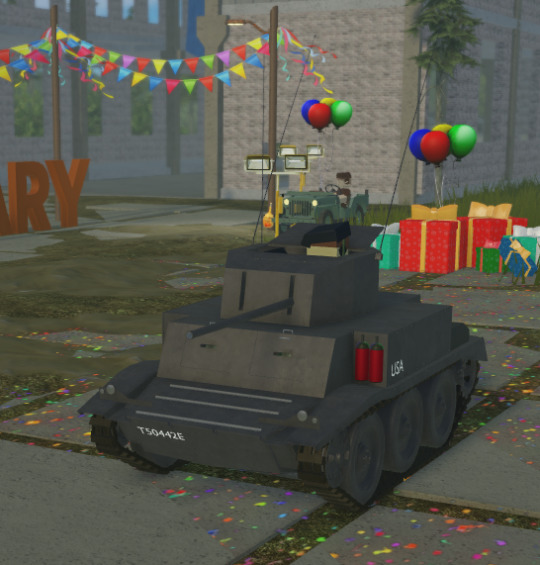
Oh, look at that! They already finished your tanmk! Well, this one belongs to you now. Now, I know what you're thinking, and we'll get to that later, but first you need to know a bit more about how our tanmks are built, and how you can build your own!
In order to demonstrate how tanmks are built, we'll take apart your tanmk and slowly rebuild it as we go along. Good? I don't care what you said because you don't have a choice in the matter.
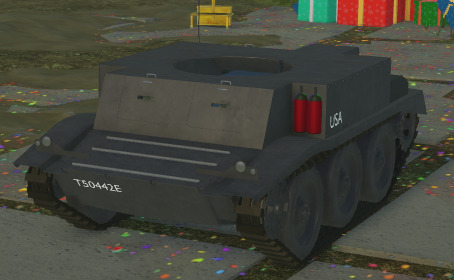
Now, we've decapitated your tanmk to inform you of how important the hull of the tanmk is. After all, there are turretless tanmks, but no hull-less ones. The hull is responsible for the speed of the tanmk, how hard it is to penetrate the lower half, et cetera et cetera.
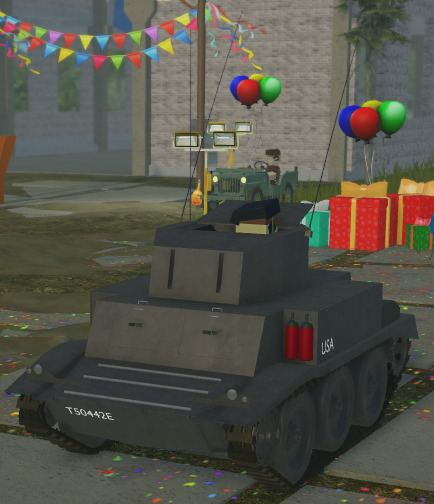
We've given the tanmk its head back! Don't think that the turret is any less important than the hull, though! The turret allows you to shoot directly behind you, after all. But only a fool would think that we were done. Let's move onto the last part.

Your tanmk is whole again! Now, the gun on your tanmk is downright the most important part of your tanmk. You can be an impenetrable monster, but if you can't fight back, you aren't going anywhere. On the other end of the spectrum, you can be a nigh unarmored tank, but with a strong gun, you can make quick and precise snipes, or be swift and attack first, disabling your opponent for a swift kill. P.S. Also, here's a cheeky strategy, you can shoot the gun to disable it, making it easier to neutralize the enemy. Until they repair it, that is.
Well, anyways, it's about time we got more specific. This is probably gonna screw with your neurons or some shit, but we might as well do it so we don't have to tear the tanmk apart again. Engineers!
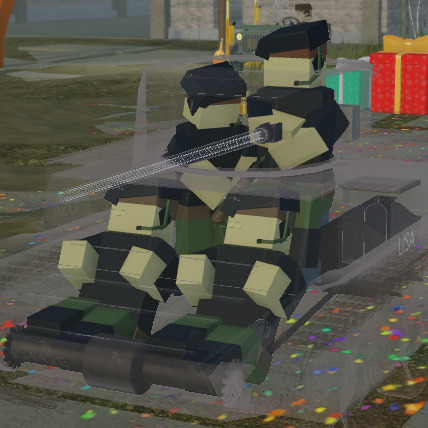
Alright! Now we can see the internals of our tanmk. Let's start with the most striking part of this x-ray view, the crew. Your crew is irreplaceable, and should be protected at all costs. You can see four crew members in this tanmk, those being the gunner, the commander, and the two drivers. If the drivers are dead, the tanmk won't be able to move, and if the gunner is dead, the turret won't be able to turn and the gun wont be able to shoot. The commander is there to be able to replace any member of the crew.
Now, just below the feet of the drivers, you can see the transmission. The transmission delivers power to the sprocket, which drives the tank. If the transmission is out, then the tanmk won't be able to move until it is repaired.
It's a bit difficult to see the rear of your tanmk from this angle, so let's move around to the back.
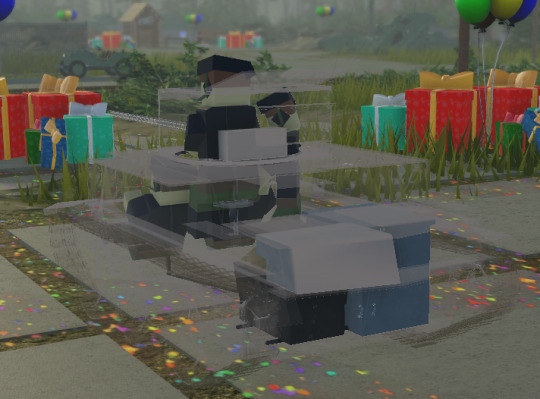
Much better. From this angle, we can see a few more things. We'll start with the big blue box on the right. That's your ammunition, and your tanmk holds 250 shells in that little box. One small issue, though. If you know how a bullet works, you know that there's a bit of primer in each one of those shells. If your ammunition is hit in the wrong spot, it can detonate, which is very bad for your crew. So make sure to protect it!
The smaller grey box is your fuel tank. If it's hit too hard, it can start a fire in the back of your tanmk! This is pretty bad, obviously, especially because it's right next to your ammunition! If the fire burns for too long, it could set off the primer in the ammunition!
Now, the black part. That's your engine. It works similarly to the transmission, in how when it's destroyed the tanmk becomes incapable of moving, but other than that, it's repairable.
Now before we move on, I want you to understand a few extra things. You can have a line-up of four different tanmks at a time to take into battle, and you can repaint your tanmks and even decorate them. Got it? Cool. Let's go talk to Joe.
Chapter 2: Economy.
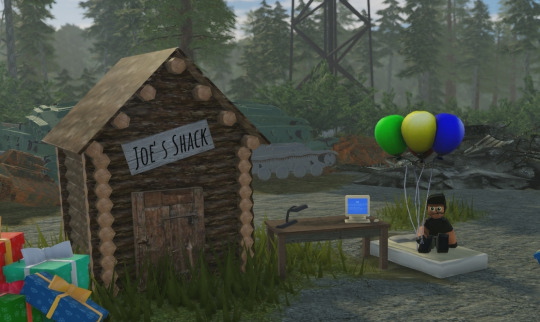
Here's Joe's Shack. Joe here lets me and you buy parts off of him. and incorporate them onto our tanmk. Though nothing in life is free, and makes us pay for the parts. Don't worry, though, because you can get money from contributing to battles.
Before we get to blueprints, we gotta understand how to get the materials for 'em. At the end of every battle, everyone gets a few free crates. The quality of these crates depends on the tier you fought in (we'll go more in-depth on tiers later), but overall its the same. You can open the crates in your garage.
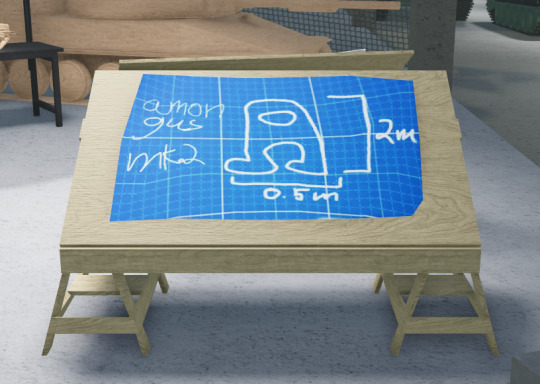
We can... ignore what's on the paper right now, but the point is that the engineers will sell you copies of their blueprints for you to build using the materials that you get in the crates. Joe doesn't sell them, so their blueprints are the only way to get the exclusive parts.
Chapter 3: Battling.
Now, you want to get onto the battlefield. Well, first you're gonna need to know a few things. Different parts have different armor thicknesses, meaning that they either won't be penetrated by certain cannons, or can be penetrated easily. Different parts of the tanmk have thinner or thicker armor, so you may not be able to penetrate the front of a tanmk, but if so I recommend you go around them and try to penetrate the sides or rear of the opponent.
You're gonna want to understand the different types of shells you're gonna be using, so we'll be going over the most important three; AP (Armor-Piercing), HE (High Explosive) and APHE (Armor-Piercing High Explosive). AP is your everyday shell, when it penetrates it breaks up into shrapnel which can damage different modules. HE is an infantry-grade round, and due to being such has below average penetration. However, if it does penetrate, it causes havoc inside the tanmk, and can often one-shot opponents. APHE is the best of both worlds, and few cannons are able to accommodate it as such.
The #1 most important part of tank warfare as a whole, nonetheless tanmk warfare, is situational awareness. If you're speeding through town in a light tank with a big gun, and you don't see the enemy tanmk at the end of the road, you're gonna get blown up. If you don't see the flanker, he's gonna put a shell straight through your side.
(Now... There isn't much to go over here, huh... Most of it is just common sense...) Oh! Tiers! Nearly forgot. More advanced parts are separated by tiers. You start out in tier 1-2 servers, and can eventually progress to 11-12! (Even I haven't gotten there yet...)
Now, here's a good tip. Treat every corner like there's an enemy behind it. If there isn't, better safe than sorry. If there is, you now have the reaction time to (possibly) shoot them before they shoot you, which is a good thing, if you couldn't tell.
Chapter 4: Closing Thoughts.
Now you're ready for your first battle. Go out there and detonate a panzer or something! I don't know, I'm not responsible for you beyond this tutorial.
0 notes
Photo


I’ve been very busy with real life stuff this past month, and seems like I will be for the short term foreseeable future. I just got back from a business trip to Fort Hood, and I’m about to go on another business trip for training in the UK.
What I do want to talk about though, is that I was lucky enough to drive an M2 Bradley last weekend. I won’t go into details on the trip itself, but for research for our simulation we were invited out to see how the real thing works and feels. It was awesome. We also ran through a few of the training exercises they have on their deployed simulators for an enlightening comparison.
I guess from watching old movies, I expected the Bradley to be difficult to drive, use two braking levers, in addition to a manual transmission and clutch, with steam gauges all over, but that’s not at all what it was like. It’s amazingly easy to drive, and the cockpit is very simple.

(Not my photo, the above is taken from a video on DailyMotion)
You have what’s essentially a steering wheel (although it looks more like an aircraft yoke) that translates automatically into track movement. Turning is a bit strange because you’re not turning any wheels, and instead just rotating tracks at different rates. In order to compensate for that, whenever you turn you need to give it more gas in order to maintain the same speed. It’s easy once you get the hang of it, but it’s definitely strange coming from a car.
Speaking of the gas, there are two pedals, just like a car, and it has a gear stick that’s very reminiscent of your typical automatic transmission. Although, much more crude and annoyingly imprecise with little feedback.
The suspension was soft. Really soft. I was expecting to be bouncing and rattling around, but I guess because of the tracks and six wheels, it spreads and smooths out everything to the point of you not really feeling any of it. The most violent motion that happens while driving is from coming to a stop. There’s no way smoothly stop (as far as I could tell) because once you get below a certain speed it seems to just lock the brakes.
I got to spend some time in the turret as well, messing with the different ways to sight and manipulate the turret. Surprisingly, it doesn’t feel weird at all when rotating. In fact, the only time I really felt it was when we turned the turret at full speed, which is very fast. Also interesting to note is that the real turret is significantly more responsive and accurate than the simulators. The way that the commander and turret gunner work together was also surprising to me, because it does a great job getting two sets of eyes scanning and targeting the turret.

Before we left, we got to observe some M1A2 Abrams doing some gunnery practice. Even from a few hundred meters away, the gun is awesome. The shockwave from the shot could be physically felt. I can’t imagine what it must be like for the crew inside or anybody who might be around.
28 notes
·
View notes
Video
DSC_9976 - Mil Mi-24 HIND-D, Red 06, Midland Air Museum, Coventry, 29th October 2022. by Martin Laycock Via Flickr: In 2003 BAE Systems acquired an ex-Polish Air Force Mi-24 HIND, which it modified as a non-flying demonstrator of new technology to target markets in the Czech Republic, Hungary, Poland, Slovakia and Bulgaria. A simulator/demonstration rig was also built. A Company electro-optical (EO) turret was fitted on the starboard side at the nose and the upgrade also gave 24h, all-weather capability, enhanced situation awareness, and an improved work split between the gunner in the front and the pilot in the rear cockpit.The pilot was provided with a Head Up Display (HUD) and a Helmet-Mounted Display was an option. Despite investing some £3million in the project it is not clear that any business was acquired and the HIND was transferred, on loan, to the Midland Air Museum at Coventry.
0 notes
Text




11th August 1937: First flight of the Boulton Paul Defiant turret fighter. Designed to combat the threat of large, unescorted bomber formations attacking the UK, the type was never intended to see action against significant single-engined opposition. It had no fixed forward-firing armament, so couldn’t be used as a conventional fighter. Suffering heavy losses during the Battle of Britain, it had more success as a night fighter and also served in a variety of other roles.
When Defiants first saw action in May 1940, helping to cover the Dunkirk evacuation, it seemed at first that the turret fighter concept could work, with a number of claims made against both bombers and fighters. However, by the time the Battle of Britain began in July, Luftwaffe pilots were well aware of the type’s vulnerabilities. This culminated in 264 Squadron losing 11 aircraft, 5 pilots and 9 gunners in 6 days at the end of August, causing Defiants to be withdrawn from daylight operations.
Retasked as a night fighter, the type would come to bear the brunt of defensive duties against the Blitz, with the Beaufighter suffering a troubled introduction to service. Though not yet equipped with radar and still struggling to locate their targets, Defiants scored the most nocturnal kills of any RAF fighter type during the winter of 1940/1941. Crews learned to use their turrets to advantage, firing undetected from abeam or below Luftwaffe bombers. The last Defiant night fighters, now carrying AI radar, continued in service until May 1942.
Defiants were the first RAF aircraft to carry dedicated electronic countermeasures equipment. ‘Moonshine’ was used by formations of 6 aircraft in daylight to simulate the approach of a much larger force on German radar screens, while ‘Mandrel’ emitted a jamming signal and was used by single Defiants at night. These missions continued until mid-1943, and would see the type’s final operational sorties.
Defiants were also employed in several other roles, including as trainers. Many were modified for use as target tugs, either during production or retrofitted. The type was briefly used for air-sea rescue, carrying underwing dinghies, but this was not a success and Defiants served i. That role for only a few months in 1942. One of the final duties performed by the type was in the testing of early ejection seats, with flights continuing into the early postwar period.
Pictured:
1) Prototype Boulton Paul Defiant, pictured in 1937. The earliest flights were conducted before the installation of the turret, giving a somewhat false impression of the aircraft’s performance.
📷 IWM (HU 106297)
2) Formation of Defiants from 264 Squadron in flight, August 1940. It was the losses suffered by this unit which led to the type’s withdrawal from daylight operations.
📷 IWM (CH 883)
3) 264 Squadron gunner about to enter his turret at Kirton in Lindsey, Lincolnshire. Due to the restricted space, Defiant gunners wore a specially designed parasuit or ‘Rhino’ suit, which incorporated a parachute. However, actually getting out of the turret in an emergency was a different story.
📷 IWM (CH 874)
4) Defiant Mark II equipped with AI Mark IV radar at Boscombe Down for handling tests in August 1941. This variant entered service at a time when Luftwaffe attacks on Britain were scarce, with almost all bomber units redeployed to the Eastern Front.
📷 IWM (ATP 9780B)
@JamieMctrusty via X
10 notes
·
View notes
Text
Backlash: A Turret Gunner Simulation
Backlash: A Turret Gunner Simulation

View On WordPress
0 notes
Text
Practice 2: Final Project Planning - 8 - Animation
There will be a few different animations required in order to make this cinematic realistic. Firstly, the tank tracks and suspension will need to move and form over any terrain it passes over. This is a tricky challenge, there are a few ways this could be achieved. Through simulation, using either an existing plugin or creating my own, that calculates how to move the suspension over the terrain.
Or the second option, albeit much simpler, animate each bit of suspension visible to the camera individually. This method would only work for this desired purpose, but may save a huge amount of time, as trying to implement physics to the suspension may be difficult.
Other animations may include:
Any loose parts on the tank moving as the tank moves over terrain (open hatches, bags, etc.)
Ambient character movement, so they aren’t static objects
Aeroplane movement at P.O.I No. 3
Bow gun (likely to move as bow gunner would be holding it)
Hatches and crew, closing toward the end of the scene
Possibly Turret, although unlikely, as they kept them straight whilst driving out of combat It’s hard to tell exactly what animation will be needed, they should, however, be fairly easy to implement, as nothing too complicated is happening.
0 notes
Text
New Xbox One Games for May 12 to 15
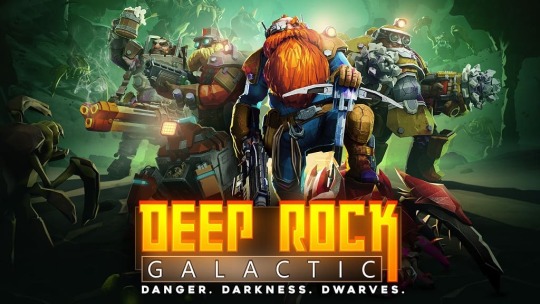
New Xbox One Games for May 12 to 15.
Huntdown – May 12
Crime doesn’t pay – Unless you’re a bounty hunter! In the mayhem-filled streets of the future where criminal gangs rule and cops fear to tread, only the bounty hunters can free the city from the corrupt fist of felony. Lay waste to the criminal underworld and make a killing in this hard boiled action comedy arcade shooter. Key Features: Hunt solo or give suppressive fire and advance on the enemy together in co-op as you run, jump, and take cover in the neon soaked, graffiti strewn 80s inspired cityscapes. Hand painted 16-bit pixel art graphics and hand-drawn animations combined with fluid action-packed 60-FPS gameplay and an epic synthesized soundtrack. Huntdown everything from feral punks to organised hockey hooligans, this game is riddled with 16-bit bad guys and crime bosses, each with their own stomping ground to reclaim, and arsenal of weapons to confiscate.
Deep Rock Galactic 1.0 – May 13
Deep Rock Galactic is a co-op-first sci-fi FPS featuring badass space Dwarves, 100% destructible environments, procedurally-generated caves, and endless hordes of alien monsters. Hoxxes IV has the highest concentration of valuable minerals ever discovered; however, everything on the planet from the creatures to the fauna is extremely hostile. Good thing Deep Rock Galactic employs the best space miners in the universe: Dwarves! Combining two things Dwarves love most - mining and killing monsters - Hoxxes is the perfect job for any proud, space-faring Dwarf. *** 4-player Co-Op *** Work together as a team to dig, explore, and fight your way through a massive cave system filled with hordes of deadly enemies and valuable resources. You will need to rely on your teammates if you want to survive the most hostile cave systems in the galaxy! *** 4 Unique Classes *** Pick the right class for the job. Mow through enemies as the Gunner, scout ahead and light up the caves as the Scout, chew through solid rock as the Driller, or support the team with defensive structures and turrets as the Engineer. *** Fully Destructible Environments *** Destroy everything around you to reach your goal. There is no set path so you can complete your mission your way. Drill straight down to your objective or build an intricate network of paths to explore your surroundings -- the choice is yours. But proceed with caution, you don’t want to stumble into an alien swarm unprepared! *** Procedurally Generated Cave Network *** Explore a network of procedurally generated cave systems filled with enemies to fight and riches to collect. There’s always something new to discover and no two playthroughs are alike. *** High-Tech Gadgets and Weapons *** Dwarves know what they need to bring to get the job done. This means the most powerful weapons and the most advanced gadgets around - flamethrowers, gatling guns, portable platform launchers, and much, much more. *** Light Your Path *** The underground caves are dark and full of terrors. You will need to bring your own lights if you want to illuminate these pitch-black caverns.
Island Saver: Dinosaur Island – May 13
Prehistoric Dinosaur Adventure! Dust off your trusty Trash Blaster and get ready for a new super-sized adventure! Another Savvy Island needs your help! And this one’s filled with fearsome dinosaur bankimals! Meet Newton, Pigby’s inventor friend, and use your money sense to help him escape his debt. Features: 14 dinosaur bankimals to save!Roar around on a Tyrannosaurus Rex!Soar through the sky on a Pteranodon!Collect lost fossils and help a friend in debt!
Potata: Fairy Flower – May 13
This adventure platformer tells a story of a young witch exploring fairy forests to find herself and save her home. Join her quest now! Immerse yourself into a picture-perfect fantasy - solve numerous puzzles, fight enemies, reveal all the secrets… and don’t forget to save the world! Features: Wonderful worldRelax gameplaySeveral ways of passing a locationsAmazing puzzles with several solutionsBossesExciting story and funny characters
Super Mega Baseball 3 – May 13
Super Mega Baseball 3 refines the series’ formula with the deepest on-field simulation yet, comprehensive online and offline game modes including a brand new Franchise mode, and vastly improved graphics. New content includes revamped UI plus tons of new audio, team/character content, and stadiums with variable lighting conditions. Features: • Challenge your hand-eye coordination or relax and hit dingers with fluid gameplay that scales seamlessly from novice to beyond-expert levels of difficulty. • Apply and refine your baseball instincts with a sophisticated baseball simulation featuring new pickoff and stealing mechanics, wild pitches/passed balls, designated hitters, and situational player traits. • Take in the sights and sounds of 14 richly detailed ballparks, each featuring unique day, night and alternate lighting conditions. • Guide an evolving team to greatness over multiple seasons in the all new Franchise mode featuring player development, aging, retirement and signing/releasing of free agents (1vCPU, 2vCPU, local or online). • Compete online to win pennants and climb to higher divisions in the cross-platform Pennant Race mode (1v1, online only). • Create your ideal league with a comprehensive customization suite that includes season length/structure, team names/uniforms/logos, and player names/appearance/attributes. • Play or simulate any combination of games/teams in customized Seasons and Elimination brackets, solo or with friends (1vCPU, 2vCPU, 1v1, 2v1, 2v2, CPUvCPU, local or online). • Skip customization and compete for top leaderboard scores with standardized teams and settings (locked player attributes) in Standard Season and Standard Elimination modes (1vCPU, 2vCPU, local or online).
Thy Sword – May 13
Thy Sword is a retro inspired hack and slash roguelike with procedural generated levels. Pick from different hero types like the Barbarian and Valkyrie to break the tyranny of the Dark Overlord! Pick from three different difficulty modes to suit your playstyle. New to adventuring? Then select apprentice mode to have infinite credits or if you’re a heroic veteran, choose hero mode where you only have one credit. Unlock additional heroes throughout your journey! Bring along a friend in 2 player cooperative mode to save the land from the Dark Overlord. Can you collect all of the crystals? Features: Fast paced, strategic sword and bow combatPlay solo or cooperatively locallyChoose from multiple heroes and unlock new onesPick from 3 different difficulty options to suit your playstyle
Ion Fury – May 14
Shelly “Bombshell” Harrison takes on a quest to slay evil transhumanist mastermind Dr. Jadus Heskel in the streets of Neo DC. She leaves a trail of carnage throughout huge, multi-path levels filled with gigantic explosions, more secret areas than we can count, and inhuman foes behind every corner. There’s no regenerating health here; stop taking cover and start running and gunning. Shelly’s crusade to take down Heskel’s army will see her leave destruction in her wake with a wide arsenal of weapons, complete with alternate fire modes and different ammo types. Ion Fury laughs at the idea of mandatory checkpoints and straight paths through shooting galleries. But, just because this is a true old-school first-person shooter doesn’t mean we've ignored all the good new stuff the last two decades have brought. Headshots? Hell yeah. More physics and interactivity? You betcha. 3DRealms, Voidpoint and 1C Entertainment have taken the best of both worlds and cooked it all into a bloody stew. Features: • The true successor to classic shooters such as Duke Nukem 3D, Shadow Warrior, and Blood. • Experience the original BUILD engine on steroids, pumped up and ready to rock again after 20 years! • Duck, jump, climb, swim, and blast your way through 7 exciting zones packed with multiple levels of mayhem! • A beautiful game world assembled from thousands of hand-crafted textures and sprites • An awe-inspiring arsenal of devastating weapons, including multiple ammo types and alternate fire modes. Tri-barreled revolvers, grenade launchers, and heat-seeking smart bombs are your best friends! • The classic '90s FPS action you love, meshed with modern inventions like locational damage and seamless level transitions • ZERO PROCEDURAL GENERATION. All levels are hand made and full of multiple paths, cool effects, and complex set pieces! • Thumping soundtrack comprised of true tracked module music, in authentic FastTracker 2 format
Emma: Lost in Memories – May 15
Poetic, surrealistic and melancholic, EMMA: Lost in Memories offers a unique experience in a strange and dangerous world where walls fade away as you touch them. The main character, Emma, is young, vibrant and intriguing: she leaves her home following an owl, and soon loses herself in a world which she slowly finds more and more dangerous. Features: One fast and simple mechanic: all the platforms and walls start disappearing when you touch them!The character runs automatically at a fixed speed! Control her special abilities (double jump, dash and climb) and do your best to react at the correct time.Minimalistic 2D artistic style completely drawn by hand.Dynamic gameplay in a poetic and eccentric world.Single-screen levels which combine skill and ingenuity with planification and strategy.Two game modes: Main Story and Memory Chest. Complete the Main Story first to enjoy the levels in the Memory Chest!Delicate reflexion on memory loss.
Tacticool Champs – May 15
Tacticool Champs combines the best features of shooter and arcade game, where up to four players fight with each other in a closed arena. Quick matches, wide variety of weapons and unlimited ways to eliminate the opponents are waiting for you! Choose your hero from ten available characters, fight in one of ten unique environments, select from sixty pre-defined scenes or create your own with an in game scene creator! Compete with friends in couch multiplayer, improve your skills playing against computer controlled characters and when you are ready, show the players from around the world who is the real Champ during online battles. Read the full article
0 notes
Text
[WT] MUH ABRUMS REVIEW
This review isn't gonna get any more American than it already is. Today's review is special. It's marking a step, the final step, on the current American tech tree. I'm reviewing muh new tank, the Abruhms.

Like I said, you just can't go more American with the Abrams. It's such a big and powerful vehicle that you feel that you're the king on the battlefield. That's the good thing about the Abrams. You can drive the thing around knowing that you're delivering freedom and liberty to the enemy, with every round that comes out of that 105mm cannon.
The Abrams has been a War Thunder meme since it came out. Some people like to refer to the "Free Abrams" after Gaijin's twitter post about how "if we gave everyone free parts and FPE, we might as well give everyone a free Abrams." Youtubers find the Abrams to be a really fun vehicle to play as well, for example Phlydaily doing numerous videos with the Abrams, praising its mobility and survivability.

One of Phlydaily’s Abrams video thumbnails
To clear things up, it is proven that the Abrams is a well-deserved vehicle after the long American grind. But why though? The M1 Abrams is an American MBT developed in the late 70s as a replacement for the costly MBT-70 and XM-803 projects. The design was based off Chrysler's XM-1, which had won a competition against GM for a replacement for the previous, aging Cold War tanks. The M1 Abrams would start production in 1979, where the first M1 would leave the production line in early 1980. The Abrams would see action in the Gulf War, and was well known for being successful in other campaigns in the Middle East. This makes the Abrams one of the most widely fielded modern-day MBTs in the world, and one of the most iconic American tanks.

M1 Abrams in action
One key feature of the Abrams is the composite armor layers, which help protect the crew and the tank's components. This feature is simulated very well in War Thunder, which I'll explain.
The Abrams has composite armor called Burlington, which was developed in Britain. It consists of different material, including ceramic and uranium, but most info about it is classified and cannot be described. Whatever the armor is made of, though, it is really effective against HEATFS. HEATFS shells will usually just detonate on impact. The only weakness is that it isn't very effective against APFSDS shells.

Cross-section of Abrams composite armor
On paper, the Abrams has around 31mm of armor, average, which might not look good, but as I was just talking about, it's got loads of composite armor under the cover. The hull has around 380mm of kinetic protection, and 600mm of chemical protection, while the turret has about 400mm of kinetic protection and 650mm of chemical protection. This armor is all in the front and the sides of the turret.
There is an ammo rack placed directly on the rear of the turret, but there is a blow-out cover separating the ammo rack and the crew, meaning that if the tank were to get ammo-racked, you would have a second chance at living since the explosion is contained only in the ammo rack. This truly proves how well engineering has improved over time.

Red spots locating the ammo racks of the Abrams.
Speaking of ammo, the Abrams offers a great selection of different shells, ranging from HESH to APFSDS. The game gives you APFSDS (M735) and HEATFS (M456) for free, and they perform fairly well, but you have the option to research a better APFSDS (M774) shell and a HESH shell.
Quick reference:
APFSDS stands for Armor-Piercing Fin Stablized Discarding Sabot HESH stands for High-Explosive Squash Head HEATFS stands for High-Explosive Anti-Tank Warhead
The free APFSDS (M735) offers 355mm of penetration at 100mm, the HESH (M393) offers 127mm of penetration at 100mm, the HEATFS (M456) offers 400mm of penetration at 100mm, and the researchable APFSDS (M774) offers 355mm of penetration (which is questionable because it actually should perform better than M735).
Another strength is the excellent mobility that the Abrams can offer. The Abrams has a Honeywell AGT-1500 gas-turbine engine, and it can pump out 1500 horses. It's also a very quiet engine, hence why the Abrams was dubbed "Whispering Death," due to its quiet purr compared to a regular diesel engine.
Just because the Abrams has so many good features doesn't mean that it has some bad features either. First off, it IS a big tank, so the best you can do is hope that nobody can see you in the spite of nowhere. I also did find some issues with aiming, as the gunner's sight will throw you off. I ended up shooting rocks that I used for cover on accident, because the gun is stupid far from the sights. I could be doing something wrong, but I found myself missing some shots because of that.0)

Abrams in-game (courtesy of Gaijin)
In terms of play style, I play the Abrams very conservatively. This means that I try not to do anything too risky, and I play the matches slowly. The Russian T-64s and T-80s can find no issue trying to pen your front armor, so if you expose yourself too much, they'll one-shot you, guaranteed. Either way, I can play this as a frontline tank, meaning that I can push, but I would only do so if I had allies on my side. This is because flanks are always seen to be taken, and without careful planning and timing, you might find yourself being encircled by the enemy.

Abrams rending (courtesy of Gaijin)
I can't get enough of the Abrams, although. I've been playing only this tank since I first bought it a day ago, and it's just truly one of the best tanks I've played in War Thunder.
0 notes
